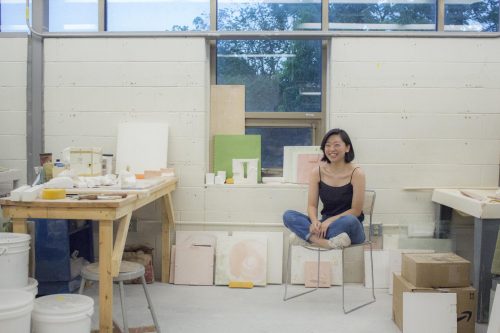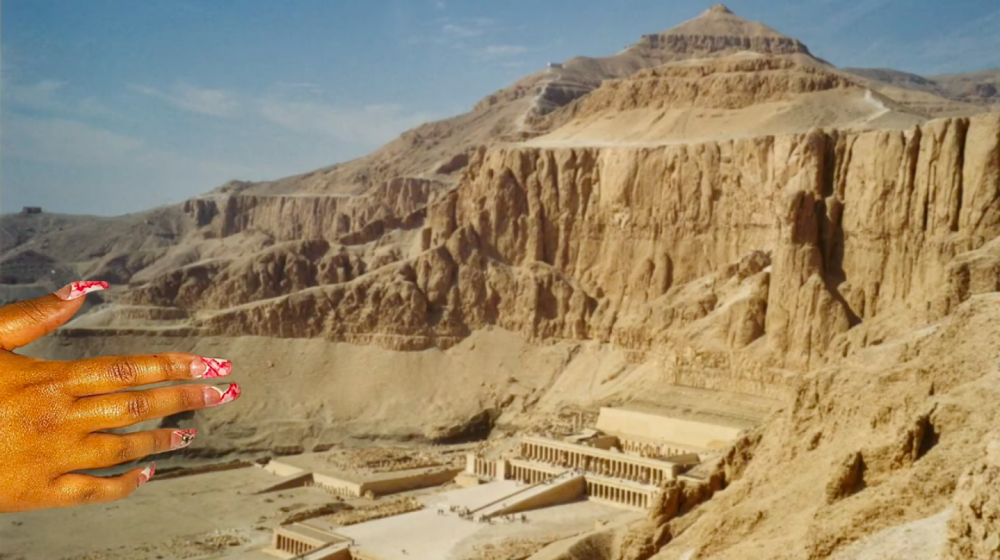While Reid’s part of Immortal Voices hints at the heavens, Pangelica’s deals with darkness. Ancient Egyptian culture placed great value in the afterlife. Bodies were prepared with care and specificity. Corpses were mummified, wrapped in linen, then placed in a sarcophagus or a cartonnage—a covering made from linen and plaster, then painted—as the Unknown Woman was. These rituals were usually reserved for the upper class, who had the money to pay for such funerary practices.
Pangelica’s piece accompanies the listener on a journey through the underworld, mirroring the journey of the Unknown Woman. It begins with a dull drone, backed by a wind-like whisper. An image of Deir el-Bahri, the necropolis complex from which the Unidentified Woman was excavated around 1930, twists into a psychedelic blur. A synthesizer in the minor key evokes a John Carpenter soundtrack and builds tension until a breaking point. Then, a release.
It’s as if the clouds have parted, and a soft and high note floats by. A woman brushes her hair, her face turned away. Shots pan over tarot cards and dead moths and a butterfly wing. The sounds distort again, while people sing joyfully, faintly, in the background. The samples are from the Elmolo tribe of Kenya, who live off of Lake Turkana, which is part of the greater Nile basin.
Back in early June, Pangelica attended a memorial to honor Black women and girls who had been victims of state and domestic violence, including Breonna Taylor, Korryn Gaines, Nina Pop, and Aiyana Stanley-Jones. “Being a Black woman, I just had this overwhelming feeling in participating in the ritual that I had never felt before,” she says. “It was reclaiming our power.”
Seeing the Unidentified Woman in the Walters, Pangelica thought of the many Black women that had not been given care in death. And she thought of how this Unidentified Woman, who had assumed her body would be safe in its resting place as she journeyed to the afterlife, was now sitting in a museum halfway around the world. Pangelica says that the act of making the soundscape, of giving a voice to the Unidentified Woman, was “holistically healing for my being. I hope that it can serve as well to other women as healing.”










